Two stage fan cooling
Discussion
Pupp said:
Late to the party and appreciate I'm not answering the original Q but never quite understood the logic of the two stage fan mod... if it's too hot, I want air in until it isn't. When it's cool enough, the blown air can cease...
Why over complicate stuff?
The Amp draw on 3 fans was massive,2 running at half speed then all kicking in on full when needed should spread the load, also everything working gradually reduced the potential for thermal shock, but i may be talking bWhy over complicate stuff?
 ks on that score
ks on that score 
Penelope Stopit said:
Discopotatoes said:
Thanks for your suggestion, I'm a bit of an electrical numpty so bare with me, how would you wire three fans all different sizes with relays and resistors? It's the relays that get me confused
There are that many possibilities, it would be best for you to decide and list what the best set-up is, when/what fan/fans are to kick in at what temperatures/thermal switchingThe relay wiring shouldn't be too difficult, the relays could be wired to use resistors for slow speeds or bridge out the resistors for fast speeds
Terminals 30 and 87 of a relay or 30 and 87a could be used to join each end of a resistor hence linking it out
blitzracing said:
Have you actually looked at the values and wattages of resistor to do this? You will need to dissipate at least 80 watts, and that's basically a car headlight bulb as a resistive load, horrible way to do it. Running the fans is series then parallel is the way to go for best efficiency without having an extra heater in the engine bay.
This needs saving here in case the poster decides to delete the originalThis is a classic
Unless you want to have input from two different heat sources, you could simplify this by using a 3 pin otter switch Useful link here
Bluebottle said:
Unless you want to have input from two different heat sources, you could simplify this by using a 3 pin otter switch Useful link here
Thanks for the link that's very useful. but yes two separate inputs one on the original swirl pot and one on the return Pipe to the pump.My thinking is the otter switch changed position over the years so both positions are valid, and if one otter were to fail I should still have fans
Edited by Discopotatoes on Sunday 5th February 15:05
David Beer said:
I would run two in series for the half(ish) speed, then switch all three to max, that way only two temperature points. Quite easy to wire up ,the full speed voltage a 'top up' supply from the starter motor to save any extra through the fuse box.
I think I've made a division, I had the same question on a forum on FB and got very similar replies both for resistors and running in series with good arguments for and against,I think for ease of install I'm going with Davids suggestion which I know is similar to what others have said so apologies if I haven't credited you with the solution.
I shall post my results when I've completed it
Thanks for all your input
Disco
Discopotatoes said:
David Beer said:
I would run two in series for the half(ish) speed, then switch all three to max, that way only two temperature points. Quite easy to wire up ,the full speed voltage a 'top up' supply from the starter motor to save any extra through the fuse box.
I think I've made a division, I had the same question on a forum on FB and got very similar replies both for resistors and running in series with good arguments for and against,I think for ease of install I'm going with Davids suggestion which I know is similar to what others have said so apologies if I haven't credited you with the solution.
I shall post my results when I've completed it
Thanks for all your input
Disco
It would be wrong of me to not comment that you have made a bad decision
Wiring motors in series is a poor mans choice and is a very poor method
One motor relies on the other motor for it's supply and vice versa one motor relies on the other motor for it's return, the slightest difference between motors will have a big affect on how one motor compaired to the other motor will run
If one motor fails, the other motor fails
It is impossible to individually fuse 2 motors when wired in series
I have read many articles that have been posted to the internet about many electrical solutions/circuits etc, you may be surprised to know that there are far more incorrect posts than correct posts
Anyone posting here that wiring motors in series is the best method does so due to a lack of experience/knowledge
As I have already mentioned above, wiring motors in series is a poor mans choice, some manufacturers use the poor mans choice as it is a cost cutter
Penelope Stopit said:
Discopotatoes said:
David Beer said:
I would run two in series for the half(ish) speed, then switch all three to max, that way only two temperature points. Quite easy to wire up ,the full speed voltage a 'top up' supply from the starter motor to save any extra through the fuse box.
I think I've made a division, I had the same question on a forum on FB and got very similar replies both for resistors and running in series with good arguments for and against,I think for ease of install I'm going with Davids suggestion which I know is similar to what others have said so apologies if I haven't credited you with the solution.
I shall post my results when I've completed it
Thanks for all your input
Disco
It would be wrong of me to not comment that you have made a bad decision
Wiring motors in series is a poor mans choice and is a very poor method
One motor relies on the other motor for it's supply and vice versa one motor relies on the other motor for it's return, the slightest difference between motors will have a big affect on how one motor compaired to the other motor will run
If one motor fails, the other motor fails
It is impossible to individually fuse 2 motors when wired in series
I have read many articles that have been posted to the internet about many electrical solutions/circuits etc, you may be surprised to know that there are far more incorrect posts than correct posts
Anyone posting here that wiring motors in series is the best method does so due to a lack of experience/knowledge
As I have already mentioned above, wiring motors in series is a poor mans choice, some manufacturers use the poor mans choice as it is a cost cutter
Penelope Stopit said:
OK You have stopped me halfway through drawing a decent diagram
It would be wrong of me to not comment that you have made a bad decision
Wiring motors in series is a poor mans choice and is a very poor method
One motor relies on the other motor for it's supply and vice versa one motor relies on the other motor for it's return, the slightest difference between motors will have a big affect on how one motor compaired to the other motor will run
If one motor fails, the other motor fails
It is impossible to individually fuse 2 motors when wired in series
I have read many articles that have been posted to the internet about many electrical solutions/circuits etc, you may be surprised to know that there are far more incorrect posts than correct posts
Anyone posting here that wiring motors in series is the best method does so due to a lack of experience/knowledge
As I have already mentioned above, wiring motors in series is a poor mans choice, some manufacturers use the poor mans choice as it is a cost cutter
A bit strong to say the least- from someone suggesting dropper resistors is a solution? If they burn out you loose the fan as well?? Sure if one motor goes open circuit in series, you loose both motors, but assuming you have the relays in place to switch to switch back to parallel as the temp rises, then the second fan will kick in at full speed anyway. Same will happen if you fuse both fans, and one fuse blows, you only loose one fan once it goes into parallel mode. If you really want to do the job properly you would use a PWM circuit to give the fans a totally variable speed depending on temp, but a few relays and two temperature switches are both simply and reliable.It would be wrong of me to not comment that you have made a bad decision
Wiring motors in series is a poor mans choice and is a very poor method
One motor relies on the other motor for it's supply and vice versa one motor relies on the other motor for it's return, the slightest difference between motors will have a big affect on how one motor compaired to the other motor will run
If one motor fails, the other motor fails
It is impossible to individually fuse 2 motors when wired in series
I have read many articles that have been posted to the internet about many electrical solutions/circuits etc, you may be surprised to know that there are far more incorrect posts than correct posts
Anyone posting here that wiring motors in series is the best method does so due to a lack of experience/knowledge
As I have already mentioned above, wiring motors in series is a poor mans choice, some manufacturers use the poor mans choice as it is a cost cutter
Penelope Stopit said:
blitzracing said:
Have you actually looked at the values and wattages of resistor to do this? You will need to dissipate at least 80 watts, and that's basically a car headlight bulb as a resistive load, horrible way to do it. Running the fans is series then parallel is the way to go for best efficiency without having an extra heater in the engine bay.
This needs saving here in case the poster decides to delete the originalThis is a classic
blitzracing said:
A bit strong to say the least- from someone suggesting dropper resistors is a solution? If they burn out you loose the fan as well?? Sure if one motor goes open circuit in series, you loose both motors, but assuming you have the relays in place to switch to switch back to parallel as the temp rises, then the second fan will kick in at full speed anyway. Same will happen if you fuse both fans, and one fuse blows, you only loose one fan once it goes into parallel mode. If you really want to do the job properly you would use a PWM circuit to give the fans a totally variable speed depending on temp, but a few relays and two temperature switches are both simply and reliable.
SavedDiscopotatoes
If you change your mind, I have found a bargain at Ebay UK, below are some images of radiator cooling fan resistors and the link should you wish to buy a few
The below resistors replace faulty Peugeot 406 607 807 Partner Radiator Fan Motor Resistors
There are many other motor manufacturers that use Radiator Fan Resistors so you could shop around, these are a bargain, best be quick if you want them
http://www.ebay.co.uk/itm/Peugeot-406-607-807-Part...
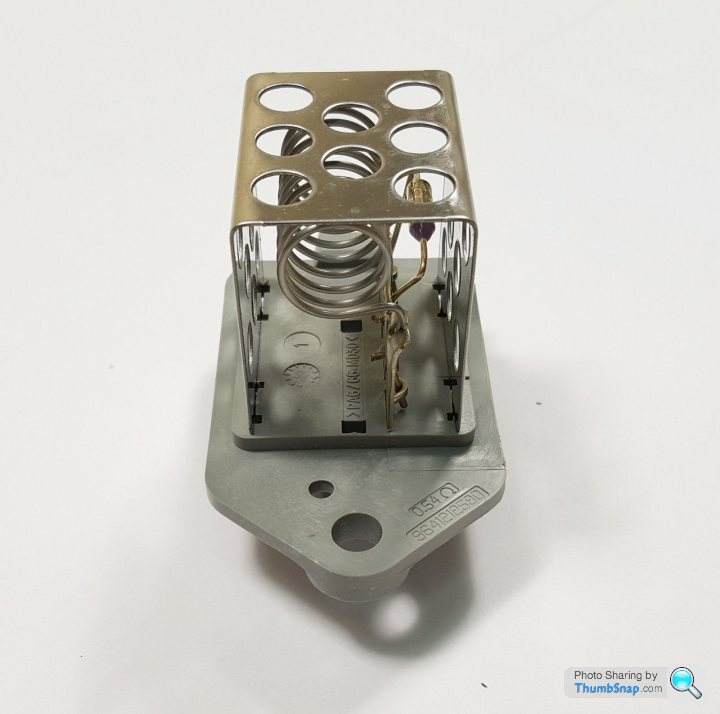
And
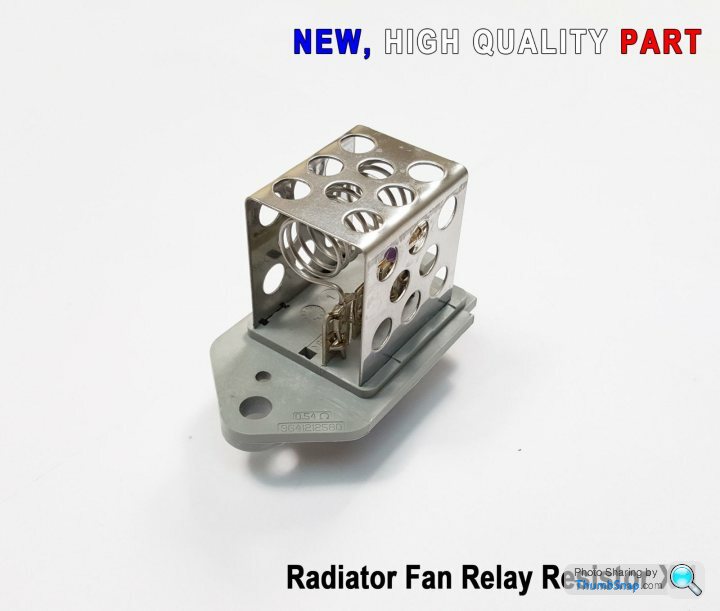
And
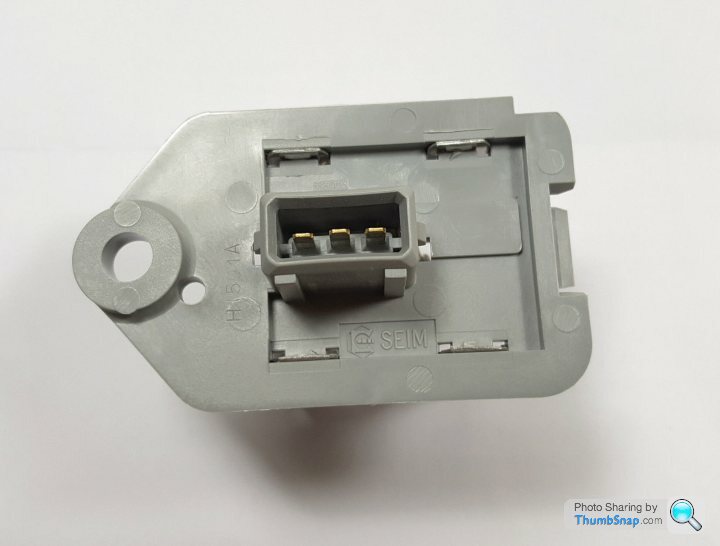
And
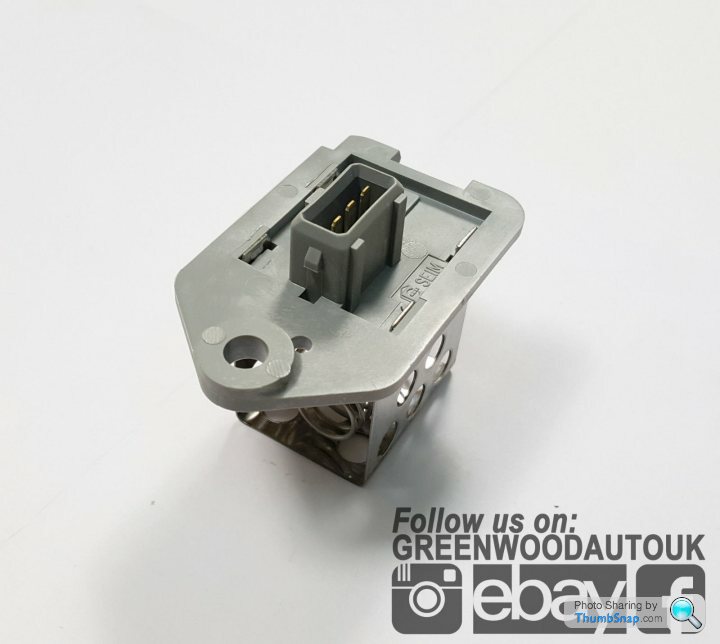
You wont be needing this next one but it might give you a few ideas
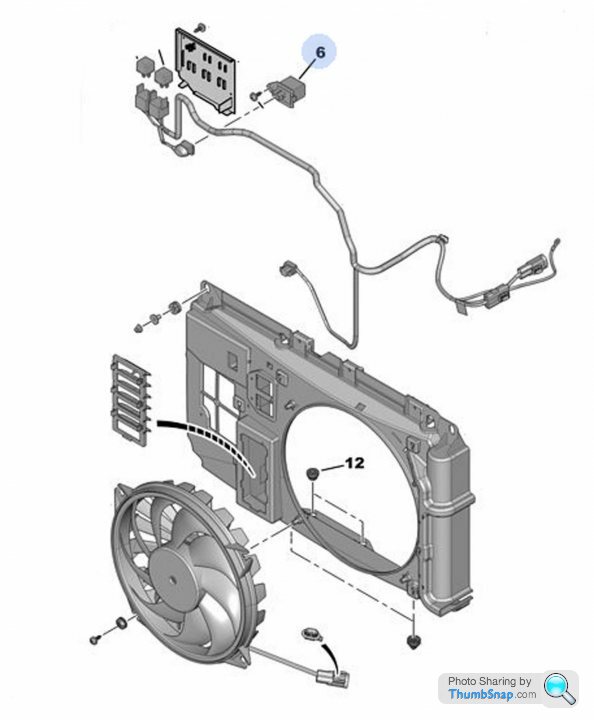
If you change your mind, I have found a bargain at Ebay UK, below are some images of radiator cooling fan resistors and the link should you wish to buy a few
The below resistors replace faulty Peugeot 406 607 807 Partner Radiator Fan Motor Resistors
There are many other motor manufacturers that use Radiator Fan Resistors so you could shop around, these are a bargain, best be quick if you want them
http://www.ebay.co.uk/itm/Peugeot-406-607-807-Part...

And

And

And

You wont be needing this next one but it might give you a few ideas

Gassing Station | Chimaera | Top of Page | What's New | My Stuff



